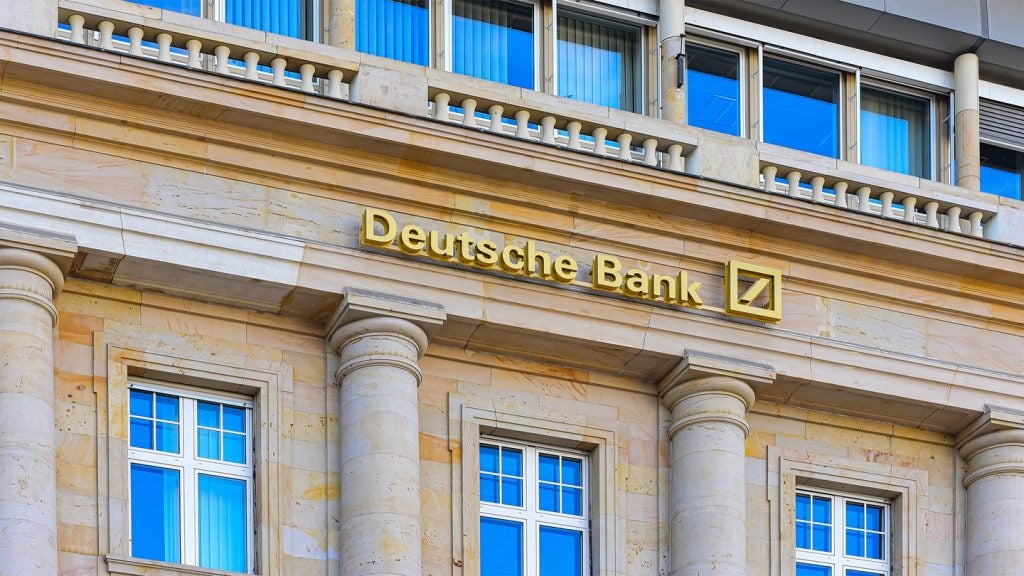JPMorgan Chase’s acquisition of failed savings-and-loan
giant Washington Mutual last year has opened up numerous new
markets to the group, not least California. The plan is to rebrand
around 1,800 WaMu branches by the end of the year – and maintain a
focus on branch-based distribution and customer service.
Could JPMorgan Chase’s opportune purchase of the
2,200-branch-strong Washington Mutual (WaMu) franchise for $1.9
billion last September be – when all the dust has settled – the
bank M&A deal of last year?
A bold statement, perhaps, given the chaos and shambles of the
US market and real concerns over the viability of many other
leading institutions.
WaMu remains – despite the trillion-plus dollars allocated since
October last year for widespread state bail-outs, loan guarantees
and other rescue packages in the US – the largest retail bank
failure in the country’s history with $308 billion in assets at the
time of its abrupt collapse. But it allowed Chase to leapfrog up
the banking hierarchy for a song: the combined group started 2009
with some 5,473 branches covering 70 percent of the US population,
a retail loan book of $569 billion and retail deposits of $360
billion.
The deal makes sense because Chase is putting a lot of its focus
on branches, namely branch-based customer service and distribution.
If WaMu had anything, it had branches, and mainly in markets where
Chase did not.
Under the leadership of its CEO Jamie Dimon – who remains one of
the few US bankers to have seen his status improve during the
crisis – JPMorgan Chase is steaming ahead with the integration of
the WaMu franchise, looking to consign the damaged brand to history
as fast as possible.
How well do you really know your competitors?
Access the most comprehensive Company Profiles on the market, powered by GlobalData. Save hours of research. Gain competitive edge.

Thank you!
Your download email will arrive shortly
Not ready to buy yet? Download a free sample
We are confident about the unique quality of our Company Profiles. However, we want you to make the most beneficial decision for your business, so we offer a free sample that you can download by submitting the below form
By GlobalDataIn total, 1,800 branches are being rebranded across 2009 while
the Chase banking platform is being introduced in three stages,
with the first deadline in May. Some 400 WaMu branches are being
closed down: 300 in the first quarter and the remaining 100 by the
end of 2009. Big branch overlaps, according to a Chase
spokesperson, are in Texas (88 branches disappearing), the New York
metro area (73 branches) and Illinois (57 branches).
Significant gaps will remain in the Chase network. But despite
the group hovering around the 10 percent market share of deposits
ceiling allowed by regulators, the company, which is also still
digesting the failed investment bank Bear Sterns, is not completely
ruling out further deals to expand into untapped markets. The
affluent north-eastern and Mid-Atlantic states of the US, namely
Maryland, the Carolinas, the Virginias and New England have no
Chase presence at all.
“Certainly we’re very busy right now making sure [the WaMu deal]
goes right. Our deposits are near the national maximum which
restricts our ability to do deals. But when we have made the WaMu
deal work well for our customers, there may be other
opportunities,” said the spokesperson.
The biggest prize from the WaMu deal has been the
much-sought-after state of California. And here, Chase is
fast-tracking the rebranding of WaMu branches in a bid to
aggressively take market share.
By 30 March, all 708 local WaMu branches and 1,900 ATMs will be
rebranded and refurbished, and by the end of 2009, a further 20
branches will be opened across the state in a $375 million
programme (split $300 million on refurbishing existing branches;
$75 million on setting up the 20 new ones).
$423,728 per branch
The figures mean JPMorgan Chase is spending on average $423,728
per branch in California on the refurbishment initiative. The
company spokesperson would not give a figure for the entire, pan-US
WaMu rebranding programme, but extrapolating out $423,728 per
branch would equate to around $763 million in total.
So keen, indeed, is Chase to get stuck into the California
market that the group is taking the risky strategy of rebranding
before the existing WaMu computer systems are replaced with the
Chase platform.
“The reason why we’re doing California first ahead of the
computer conversion is because it is such an important market, a
huge market for us with $75 billion in deposits for us,” said the
spokesperson.
“The WaMu name was damaged [indirectly] in part because of the
Federal Deposit Insurance Corporation’s takeover of IndyMac several
months before the WaMu deal. Some depositors did not get all their
money back. [Regulators] gave them only 50 cents to the dollar
above the FDIC insurance levels. In a standalone market like
California we can rebrand pretty simply. We think it makes
sense.”
And the primary focus for Chase in both California and other
states remains on branches. The group has, over the past few years,
set about installing personal bankers, mortgage advisers,
investment advisers and business banking specialists in branches to
maximise sales opportunities: the group now has, in every branch,
on average one salesperson to one teller. In its 2008 full-year
figures, Chase reported that branch sales of credit cards increased
by 56 percent year-on-year, for instance, helping push total cards
in circulation to 157 million (it also admitted sales of investment
products declined 4 percent).
Chase has experience of increasing branch-based sales. It cites
the October 2006 acquisition of 339 Bank of New York branches:
within 18 months, Chase had increased the number of credit cards in
the acquired branches it was selling twenty-fold, and converting 40
percent more investment sales.
“How important does the branch remain to the Chase franchise?
Huge. If you go back eight years, everyone said the internet is
going to take over everything – well, consumers still open their
accounts at branches, like being dealt with face-to-face, and we
still think that this makes a lot of sense. The internet does not
replace the branch, it supplements the branch,” said the Chase
spokesperson.
“The other point is that in a market like New York or Chicago or
Los Angeles, [customers] see the huge spread of our branches and
our ATMs and think ‘wow, they are a convenient bank’. I think you
can’t overestimate the importance of the branch and the visibility.
Visibility and convenience are significant factors.”







